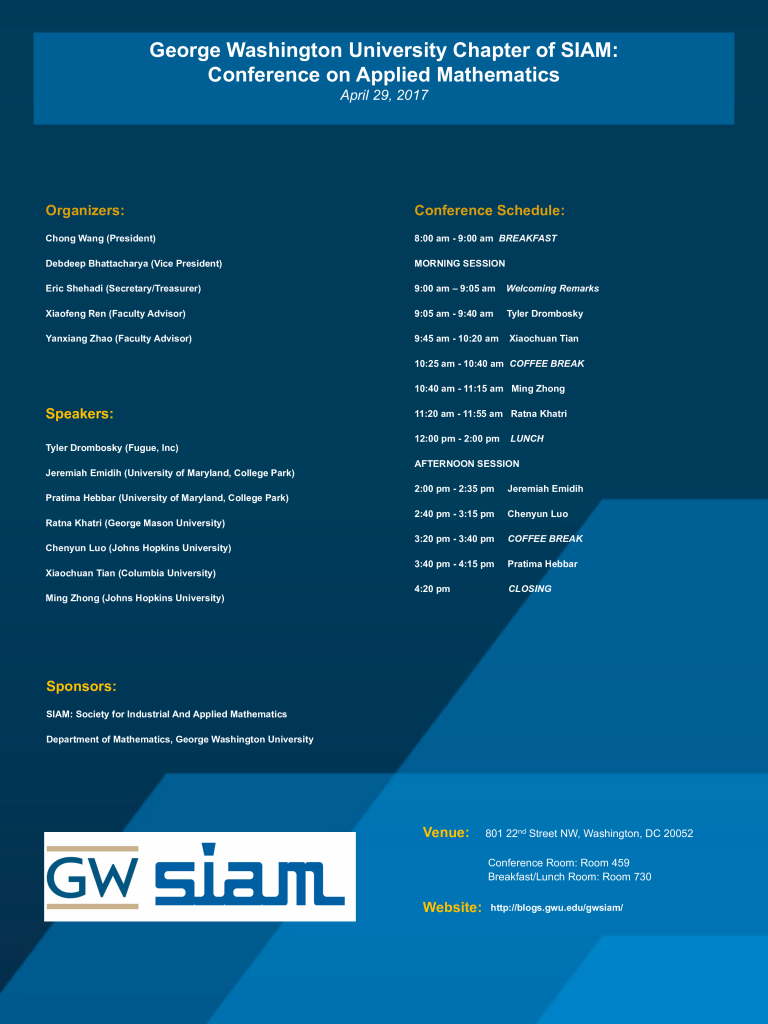Titles and Abstracts:
| Tyler Drombosky | Fugue, Inc |
|---|---|
| Applications for Semantic Graphs in Infrastructure Management | |
| Fugue is a tool for specifying, deploying, and enforcing cloud infrastructure. We designed our own data declaration language, Ludwig, to specify infrastructure configuration. Ludwig shares many patterns with functional programming languages such as immutability, sum types, and higher order functions. One of the ongoing challenges is ensuring customers can update their existing infrastructure. They do this by changing their configuration document and handing it to Fugue. Fugue must decide which resources need to be created, deleted, and modified. Choosing the incorrect operation can result in extraneous costs, unanticipated downtime, or destruction of valuable data. We developed an algorithm inspired by the subgraph isomorphism problem that guarantees we never unnecessarily create or delete resources. We represent the declared infrastructure as a semantic graph, with the resources as nodes and relationships between resources as edges. The metadata associated with the semantic graph provides us with enough additional information to make this otherwise intractable problem feasible in a commercial setting. |
|
| Chenyun Luo | Johns Hopkins University |
|---|---|
| On the motion of a slightly compressible liquid | |
| I would like to go over some recent results on the compressible Euler equations with free boundary. We first provide a new apriori energy estimates which are uniform in the sound speed, which leads to the convergence to the solutions of the incompressible Euler equations. This is a joint work with Hans Lindblad. On the other hand, the energy estimates can be generalized to the compressible water wave problem, i.e., the domain that occupied by the fluid is assumed to be unbounded. We are also able to prove weighted energy estimates for a compressible water wave. Our method requires the detailed analysis of the geometry of the moving boundary. | |
| Ming Zhong | Johns Hopkins University |
|---|---|
| Hierarchical Reconstruction Method for De-convolution on Discrete Helmholtz Filter | |
| We present a detailed analysis of the application of a multi-scale Hierarchical Reconstruction method for solving the de-convolution problem on the discrete Helmholtz filter (defined in the Finite Element setting). The de-convolution on the discrete Helmholtz filter comes from solving the closure problem from the Large Eddy Simulation (LES). The ill-posedness is caused by the ill-condition of the discrete Helmholtz filter when the resolution scale in solving the the LES problem. |
|
| Xiaochuan Tian | Columbia University |
|---|---|
| Asymptotically Compatible Schemes for Robust Discretization of Nonlocal Models | |
| Nonlocal continuum models are in general integral-differential equations in place of the conventional partial differential equations. While nonlocal models show their effectiveness in modeling a number of anomalous and singular processes in physics and material sciences, they also come with increased difficulty in numerical analysis with nonlocality involved. In this talk, we study robust numerical approximations of linear nonlocal peridynamic models parametrized by the horizon parameter. In particular, we provide asymptotically compatible discretization for nonlocal parametrized models which give convergent schemes in both nonlocal settings and their local limits. | |
| Jeremiah Emidih | University of Maryland, College Park |
|---|---|
| Cancer Cell Line Data Fusion for Identifying Response Determinants in Precision Medicine | |
| The most commonly used anticancer treatments include DNA-targeted, genome specific drugs such as topoisomerase inhibitors. Unfortunately, many patients do not respond to the cytotoxic drugs since it is not yet possible to identify genomic parameters for response or non-response. Understanding genomic networks which determine treatment response is thus a cornerstone to effective use of DNA-targeted drugs. We utilize a novel data fusion framework based on Laplacian eigenmap embeddings to identify potential response determinants to the topoisomerase inhibitor Topotecan. | |
| Pratima Hebbar | University of Maryland, College Park |
|---|---|
| Multi-type branching processes with time-dependent branching rates. | |
| In this talk I will introduce Branching Processes and give some background on the limiting behavior of single type branching processes in the super critical, critical and sub critical cases. I will then introduce Multi-type branching Processes and explain the results we obtained for these processes with time-dependent branching rates. Our first result gives a criterion for almost sure extinction of the process in terms of the asymptotic behavior of the branching rates, and our second result gives a necessary and sufficient condition for the existence of an exponential limit in the case of a scaled multi-type branching process conditioned on its survival. This is joint work with Dmitry Dolgopyat, Leonid Koralov, and Mark Perlman. | |
| Ratna Khatri | George Mason University |
|---|---|
| Consensus in one population model of opinion dynamics | |
| We consider a continuous version of the Krause model of opinion dynamics. As per the model, agents update their opinions, which are one-dimensional, based on a compactly supported interaction function. Interaction between agents either leads to a state of consensus, where agents starting out with differing initial opinions converge to a single opinion as time evolves, or to a fragmented state with multiple opinions. We linearize the system about a uniform density solution and predict consensus or fragmentation based upon the most unstable mode of the dispersion relation, which is then compared against numerical simulations for varying domain sizes and interaction functions. |
|
Venue:
Conference Room: Room 459
Breakfast/Lunch Room: Room 730
Address: Phillips Hall, 801 22nd Street NW, Washington , D.C. 20052
Sponsors:

